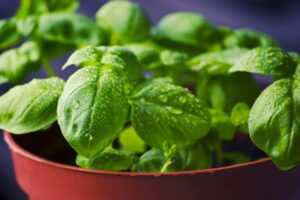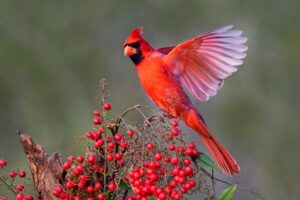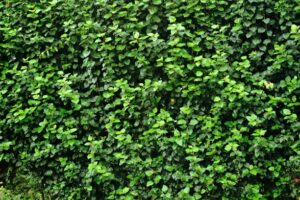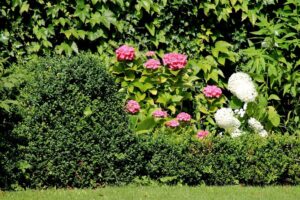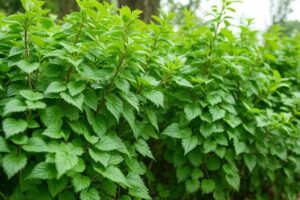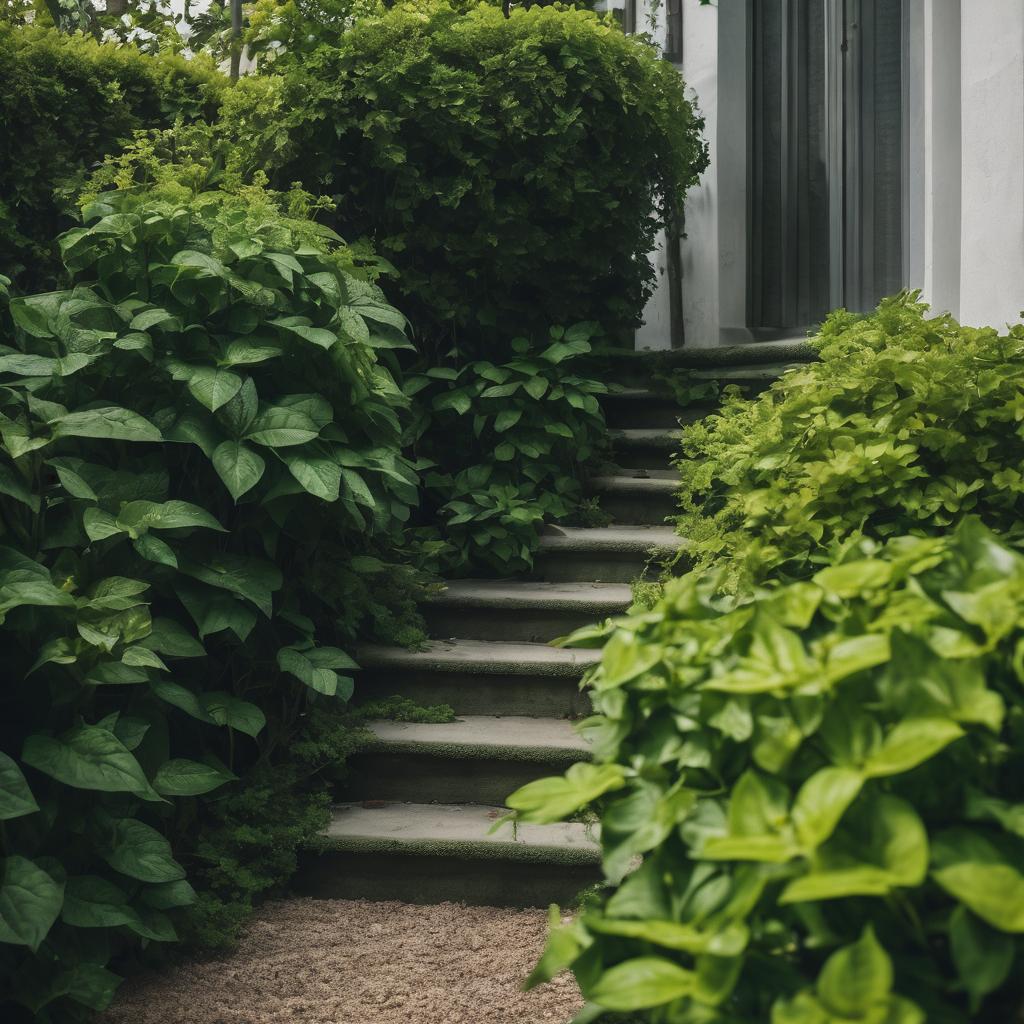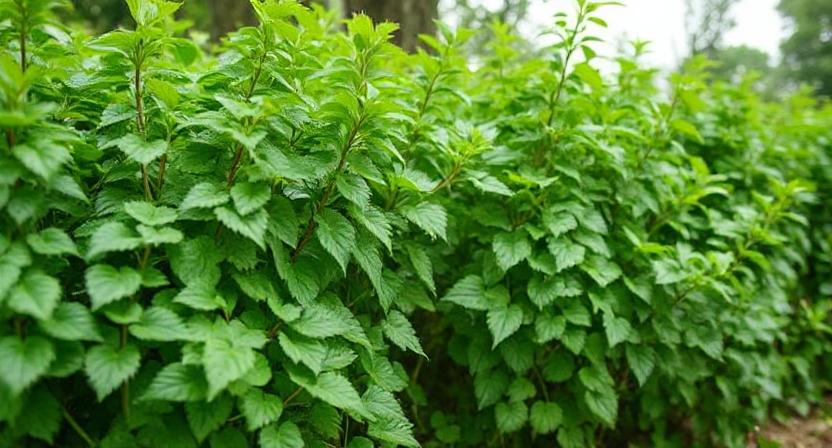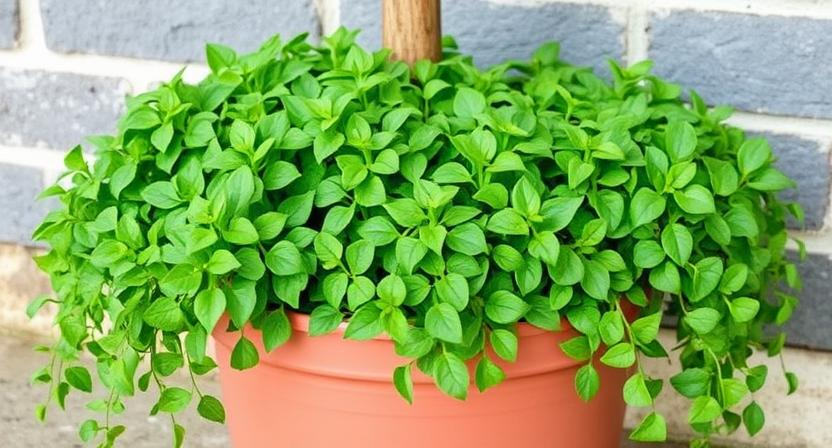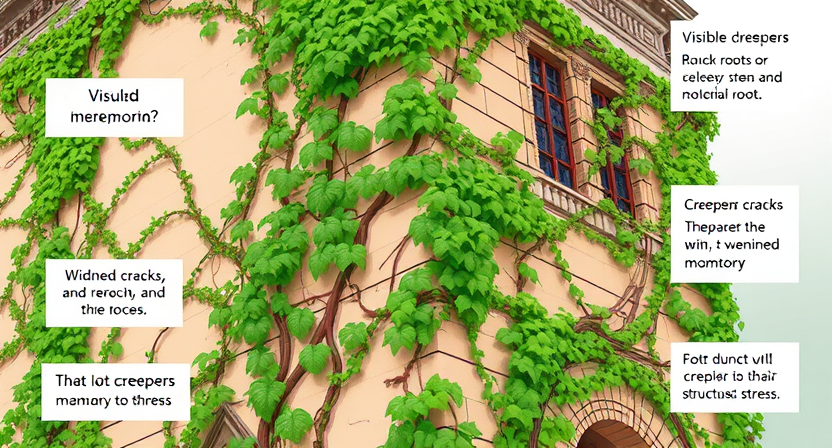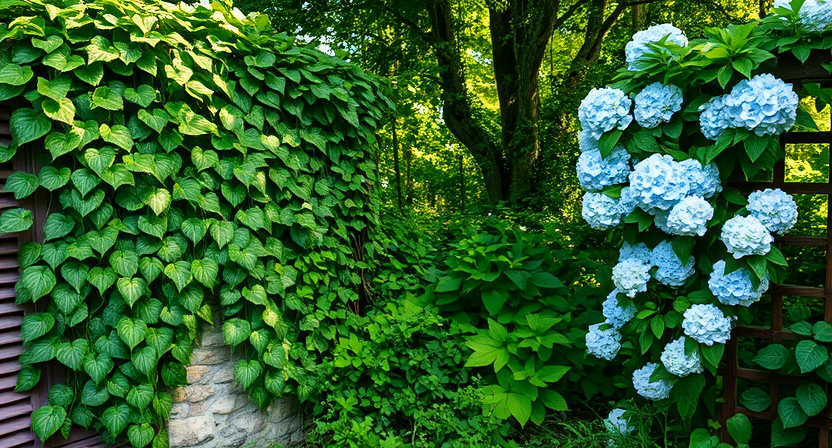Types of Creepers That Add Beauty to Your Garden
Creepers are a beautiful addition to any garden, adding a touch of elegance and natural charm. With their ability to climb and spread, they can transform even the simplest of spaces into a lush and vibrant oasis. One type of creeper that adds beauty to your garden is the Clematis. Known for its stunning flowers in various colors such as purple, pink, and white, the Clematis can create a dramatic focal point against trellises or walls. Its long, sprawling vines create a stunning visual display and can easily be trained to climb up any structure.
Another creeper that adds beauty to your garden is the Jasmine. With its fragrant white blossoms, the Jasmine not only adds a touch of beauty but also fills the air with a delightful scent. Its twining vines can be encouraged to climb over fences or pergolas, creating a romantic and enchanting atmosphere. The Jasmine is a low-maintenance creeper, making it a perfect choice for busy gardeners who want to add beauty to their space with minimal effort. Its delicate flowers and lush foliage make it a popular choice for those looking to create a serene and relaxing garden retreat.
• Clematis: Known for stunning flowers in purple, pink, and white
• Creates a dramatic focal point against trellises or walls
• Long, sprawling vines create a stunning visual display
• Easily trained to climb up any structure
• Jasmine: Fragrant white blossoms fill the air with delightful scent
• Twining vines can climb over fences or pergolas
• Creates a romantic and enchanting atmosphere
• Low-maintenance creeper, perfect for busy gardeners
Overall Benefits of Creepers in Your Garden:
1. Adds beauty and elegance to your garden space.
2. Can transform even the simplest spaces into lush oases.
3. Provides a dramatic focal point against structures like trellises or walls.
4. Fills the air with delightful scents from fragrant flowers.
5. Creates a romantic and enchanting atmosphere when climbing over fences or pergolas.
6. Requires minimal effort for maintenance, making it suitable for busy gardeners.
7. Delicate flowers and lush foliage contribute to creating serene and relaxing garden retreats.
In conclusion, adding creepers like Clematis and Jasmine to your garden can enhance its beauty significantly. These types of creepers not only provide stunning visuals but also add delightful scents that create an enchanting atmosphere in your outdoor space. With their ability to climb and spread easily, they are low-maintenance options that require minimal effort while offering maximum impact on transforming your garden into an elegant oasis where you can relax and unwind.
How to Choose the Right Creepers for Your Garden
Creepers can be a beautiful addition to any garden, adding a touch of elegance and charm. However, with so many options available, it can be overwhelming to choose the right creepers for your garden. To make the selection process easier, consider the specific needs and conditions of your garden.
First and foremost, assess the amount of sunlight your garden receives throughout the day. Some creepers thrive in full sun, while others prefer partial or even full shade. By understanding the sunlight requirements of the creepers, you can ensure that they will be able to thrive and flourish in your garden. Additionally, consider the soil type and moisture levels in your garden. Certain creepers prefer well-drained soil, while others can tolerate damp or even wet conditions. By selecting creepers that are compatible with the soil and moisture levels in your garden, you can create an optimal environment for their growth.
• Assess the amount of sunlight your garden receives throughout the day
• Some creepers thrive in full sun, while others prefer partial or even full shade
• Understand the sunlight requirements of the creepers to ensure their thriving and flourishing
• Consider the soil type and moisture levels in your garden
• Certain creepers prefer well-drained soil, while others can tolerate damp or wet conditions
• Select creepers that are compatible with the soil and moisture levels in your garden
Enhancing Your Garden with Climbing Vines
Climbing vines can be a beautiful and functional addition to any garden. They add vertical interest and help create a sense of depth and dimension to your outdoor space. Whether you have a small courtyard or a sprawling backyard, climbing vines can be a versatile choice to enhance your garden.
One of the main advantages of using climbing vines is their ability to provide natural shade and privacy. They can be trained to grow on trellises, fences, or pergolas, creating a living green wall that shields your garden from prying eyes or harsh sunlight. Moreover, many climbing vines are fast-growing, allowing you to quickly establish a lush and visually appealing space. Additionally, they can be used to cover unsightly structures or disguise the facade of a building, seamlessly blending nature with architecture.
• Climbing vines add vertical interest and depth to your garden
• They provide natural shade and privacy when grown on trellises, fences, or pergolas
• Fast-growing climbing vines can quickly establish a lush and visually appealing space
• They can be used to cover unsightly structures or disguise the facade of a building
Ground Covers: A Beautiful Addition to Any Garden
Ground covers play a vital role in enhancing the beauty of any garden. Not only do they add a touch of lushness to the landscape, but they also provide many practical benefits. These low-growing plants are often used to cover large expanses of ground, suppressing weed growth and reducing soil erosion. They can also help to retain moisture in the soil, making them a valuable addition to gardens in arid regions. With their ability to spread and fill in empty spaces, ground covers are an excellent choice for creating a visually appealing and well-maintained garden.
In addition to their practical advantages, ground covers also offer an array of aesthetic benefits. With their various textures, colors, and forms, they can create visual interest and add depth to your garden. From the delicate foliage of creeping thyme to the vibrant blooms of ajuga, there is a wide range of ground covers to suit every garden style. By carefully selecting and strategically placing these plants, you can create a visually stunning garden that is both beautiful and functional. Whether you want to fill in gaps between larger plants, soften the edges of pathways, or create a carpet-like effect in certain areas, ground covers are an excellent choice for adding beauty to your garden without much effort or maintenance.
• Ground covers are low-growing plants that cover large expanses of ground, suppressing weed growth and reducing soil erosion.
• They help retain moisture in the soil, making them valuable additions to gardens in arid regions.
• Ground covers have various textures, colors, and forms that create visual interest and add depth to a garden.
• Creeping thyme has delicate foliage while ajuga has vibrant blooms – there is a wide range of ground covers to suit every garden style.
• By strategically placing these plants, you can create a visually stunning garden that is both beautiful and functional.
• Ground covers can fill in gaps between larger plants, soften the edges of pathways, or create a carpet-like effect in certain areas.
Creepers That Provide Colorful Blooms Throughout the Year
When it comes to adding bursts of vibrant color to your garden all year round, there are several creepers that can do the job splendidly. One such creeper is the Bougainvillea. Known for its stunning array of colorful bracts, Bougainvillea plants come in various shades such as purple, pink, magenta, and red. These hardy vines thrive in warm, sunny climates and can withstand periods of drought. With proper care and regular pruning, Bougainvillea can provide a breathtaking display of blooms throughout the year.
Another creeper that can add a pop of color to your garden is the Mandevilla. With its trumpet-shaped flowers in shades of white, pink, and red, this creeper is a favorite among gardeners. Mandevilla requires well-draining soil and prefers partial shade, making it an ideal choice for gardens that receive plenty of sunlight during the day but have some shaded areas as well. Regular fertilization and watering will help keep this creeper healthy and blooming profusely, bringing a touch of tropical beauty to your garden year after year.
• Bougainvillea plants have a stunning array of colorful bracts in shades such as purple, pink, magenta, and red.
• These hardy vines thrive in warm, sunny climates and can withstand periods of drought.
• Proper care and regular pruning can ensure a breathtaking display of blooms throughout the year.
• Mandevilla creeper has trumpet-shaped flowers in shades of white, pink, and red.
• It requires well-draining soil and prefers partial shade.
• Regular fertilization and watering will help keep this creeper healthy and blooming profusely.
Using Creepers to Create Vertical Gardens
Vertical gardens are a popular trend for urban dwellers with limited space. By utilizing creepers, you can easily create a stunning and green vertical garden. Creepers have long trailing stems that can be trained to climb walls, fences, or trellises, providing a beautiful and lush backdrop to any outdoor space.
One advantage of using creepers for vertical gardens is their ability to create a sense of privacy. By allowing the vines to grow and intertwine, you can effectively block out unwanted views and create a secluded oasis. Additionally, creepers can help reduce the noise pollution from the surrounding area, creating a more peaceful and serene environment.
• Creepers can be trained to grow in a variety of patterns, allowing for endless design possibilities.
• They are low-maintenance plants that require minimal watering and pruning once established.
• Creepers provide natural shade and help to cool down the surrounding area, making them perfect for hot climates.
• These plants also attract birds, butterflies, and other pollinators, adding life and movement to your vertical garden.
• Creepers can improve air quality by absorbing pollutants such as carbon dioxide and releasing oxygen into the atmosphere.
• They can act as natural insulation for buildings, reducing energy consumption by providing an extra layer of protection against heat or cold.
Low-Maintenance Creepers for Busy Gardeners
Busy gardeners often struggle to find plants that require minimal care and still add beauty to their outdoor spaces. Fortunately, there are several low-maintenance creepers that are perfect for those with limited time and energy. One such creeper is the English ivy (Hedera helix), which thrives in a variety of conditions and requires little attention. Its trailing vines can quickly cover bare walls or create an attractive ground cover, making it a versatile choice for busy gardeners.
Another low-maintenance creeper is the creeping thyme (Thymus serpyllum), which is not only easy to care for but also adds a lovely fragrance to your garden. This ground cover thrives in sunny locations, requiring minimal watering and maintenance. With its delicate flowers and aromatic leaves, creeping thyme can transform any dull corner of your garden into a vibrant and low-maintenance focal point. For busy gardeners who want to enjoy the beauty of creepers without the hassle of constant upkeep, these low-maintenance options are definitely worth considering.
• English ivy (Hedera helix) is a versatile creeper that requires little attention and can quickly cover bare walls or create ground cover.
• Creeping thyme (Thymus serpyllum) is a low-maintenance creeper that adds fragrance to your garden and thrives in sunny locations.
• Creeping thyme requires minimal watering and maintenance, making it an ideal choice for busy gardeners.
• Both English ivy and creeping thyme can transform dull corners of your garden into vibrant focal points with their beauty and ease of care.
Creepers That Attract Butterflies and Birds to Your Garden
Adding the right creepers to your garden can not only bring visual appeal but also attract beautiful butterflies and birds. These winged creatures are not only a delight to watch but also play a crucial role in pollination. When choosing creepers for your garden, consider plants that produce nectar-rich flowers and offer shelter for these creatures.
One popular creeper that attracts butterflies is the Butterfly Bush (Buddleia davidii). Its large cone-shaped clusters of flowers in vibrant colors like purple, pink, and white are a magnet for butterflies. Another option is the Trumpet Vine (Campsis radicans), which produces tubular orange or red flowers that hummingbirds find irresistible. By strategically placing these creepers in your garden, you can create a haven that will invite these beautiful creatures to flutter and chirp among your flowers.
• The Butterfly Bush (Buddleia davidii) is a popular creeper that attracts butterflies with its large cone-shaped clusters of flowers in vibrant colors like purple, pink, and white.
• The Trumpet Vine (Campsis radicans) produces tubular orange or red flowers that are irresistible to hummingbirds.
• By strategically placing these creepers in your garden, you can create a haven for butterflies and birds to flutter and chirp among your flowers.
Creepers That Thrive in Different Climates and Conditions
Creepers are versatile plants that can thrive in various climates and conditions, making them a great addition to any garden. Whether you have a hot and dry climate or a cool and damp one, there are creepers available to suit your specific needs. These plants have adapted to different environments, allowing them to withstand extreme temperatures, high humidity, or even poor soil conditions.
In warm and tropical regions, creepers like Bougainvillea and Mandevilla are popular choices. These plants love the sun and can tolerate heat well, making them perfect for gardens in areas with long summers. On the other hand, if you live in a cooler climate with frost and snow, you can opt for creepers like Virginia creeper or English ivy. These hardy plants are known for their ability to withstand cold temperatures and can add a touch of elegance to your garden even during the coldest months.
• Bougainvillea and Mandevilla are popular choices for warm and tropical regions
• These plants can tolerate heat well and love the sun
• Perfect for gardens in areas with long summers
• Virginia creeper and English ivy are suitable for cooler climates with frost and snow
• Known for their ability to withstand cold temperatures
• Can add a touch of elegance to your garden even during the coldest months
Tips for Properly Caring for Creepers in Your Garden
Creepers can add a beautiful touch to any garden, but they do require some care and attention to keep them thriving. One important tip for caring for creepers is to provide them with the right amount of water. While they generally prefer moist soil, it is important not to overwater them as this can lead to root rot. It is best to water them only when the top inch of soil feels dry to the touch. Additionally, consider using mulch around the base of the creepers to help retain moisture and prevent weed growth.
Another key aspect of caring for creepers is ensuring they receive adequate support. Most creepers are vines that need something to climb on, so it is crucial to provide a trellis, fence, or other structure for them to attach themselves to. Regularly inspect the support structure to ensure it is sturdy and can handle the weight of the growing plants. As the creepers grow, gently guide their tendrils towards the support system to help them climb and spread in a controlled manner.
• Provide the right amount of water to creepers
• Avoid overwatering to prevent root rot
• Water when the top inch of soil feels dry
• Use mulch around base for moisture retention and weed prevention
• Ensure creepers have adequate support
• Provide a trellis, fence, or structure for them to climb on
• Regularly inspect the support structure for stability
• Guide tendrils towards the support system as they grow



